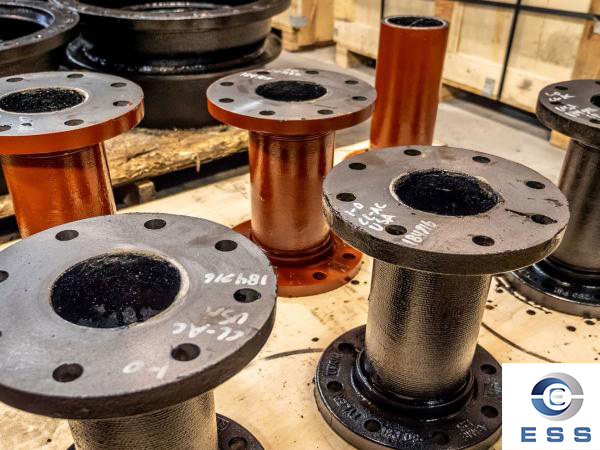Flange is a disc-shaped part, used in pairs, and is commonly used in the connection of steel pipes in pipeline engineering.

Flange connection of hydraulic pipe is to fix two pipes, pipe fittings or equipment on a flange plate first, then add flange pads between the two flange plates, and finally use bolts to tighten the two flange plates. It is tightly coupled with a detachable joint. The connection between stationary pipes and rotating or reciprocating equipment can be realized.
The flange connection is easy to use, can withstand large pressures, and is suitable for high-pressure and high-flow applications. Its main features are easy disassembly, high strength, good sealing performance, tight connection, smooth power transmission, and easy maintenance. When installing the flange, the two flanges must be kept parallel. The sealing surface of the flange must not be damaged and must be cleaned. Flange gaskets should be selected according to design regulations. Installation and disassembly are complex and require professional knowledge and skills.
Flanges are divided into threaded (wired) flanges and welded flanges. Generally, wire flanges are used for low-pressure small diameters, and welded flanges are used for high-pressure and low-pressure large diameters. The thickness of the flange plate and the diameter and number of connecting bolts are different for different pressures. According to different levels of pressure, flange pads are also made of different materials, ranging from low-pressure asbestos pads, high-pressure asbestos pads and PTFE pads to metal pads.
When water pumps and valves are connected to pipelines, some parts of these equipment are also made into corresponding flange shapes, also called flange connection. Any connecting parts that are bolted on two planes at the periphery and closed at the same time are generally called "flanges", such as the joints of ventilation ducts. This kind of parts can be called "flange parts". But this connection is only a part of the equipment, Such as the connection between the flange and the water pump, It is not easy to call the water pump "flange parts". Relatively small ones, such as valves, can be called "flange parts".
Note when connecting: The installation of flange connections requires the use of special flange sealant to ensure no leakage at the connection. At the same time, tightening must be carried out strictly in accordance with the specified torque value to avoid rupture of the steel pipe due to excessive stress caused by over-tightening.
In industrial pipelines, flange connections are widely used. For example, in indoor fire hydrant water supply systems, butterfly valves, gate valves, check valves and other types of valves are connected to pipelines. In practical applications, flange connections are widely used in key equipment such as pump stations, valves, and cylinders in hydraulic systems. For example, hydraulic pump stations usually use flange connections to connect inlet and outlet pipes to ensure stable delivery of hydraulic fluid. In the connection between hydraulic valves and cylinders, flange connections can provide reliable sealing and ensure the normal operation of the system.
Of course, flange connections also have some limitations. First of all, due to its relatively complex structure, the installation and disassembly process is relatively cumbersome and requires certain professional knowledge and skills. Secondly, the application of flange connections in high temperature, high pressure and corrosive media environments is subject to certain restrictions, and special materials and seals need to be used to meet the requirements.













 Eastern Steel Manufacturing Co.,Ltd not only improve product production and sales services, but also provide additional value-added services. As long as you need, we can complete your specific needs together.
Eastern Steel Manufacturing Co.,Ltd not only improve product production and sales services, but also provide additional value-added services. As long as you need, we can complete your specific needs together.










